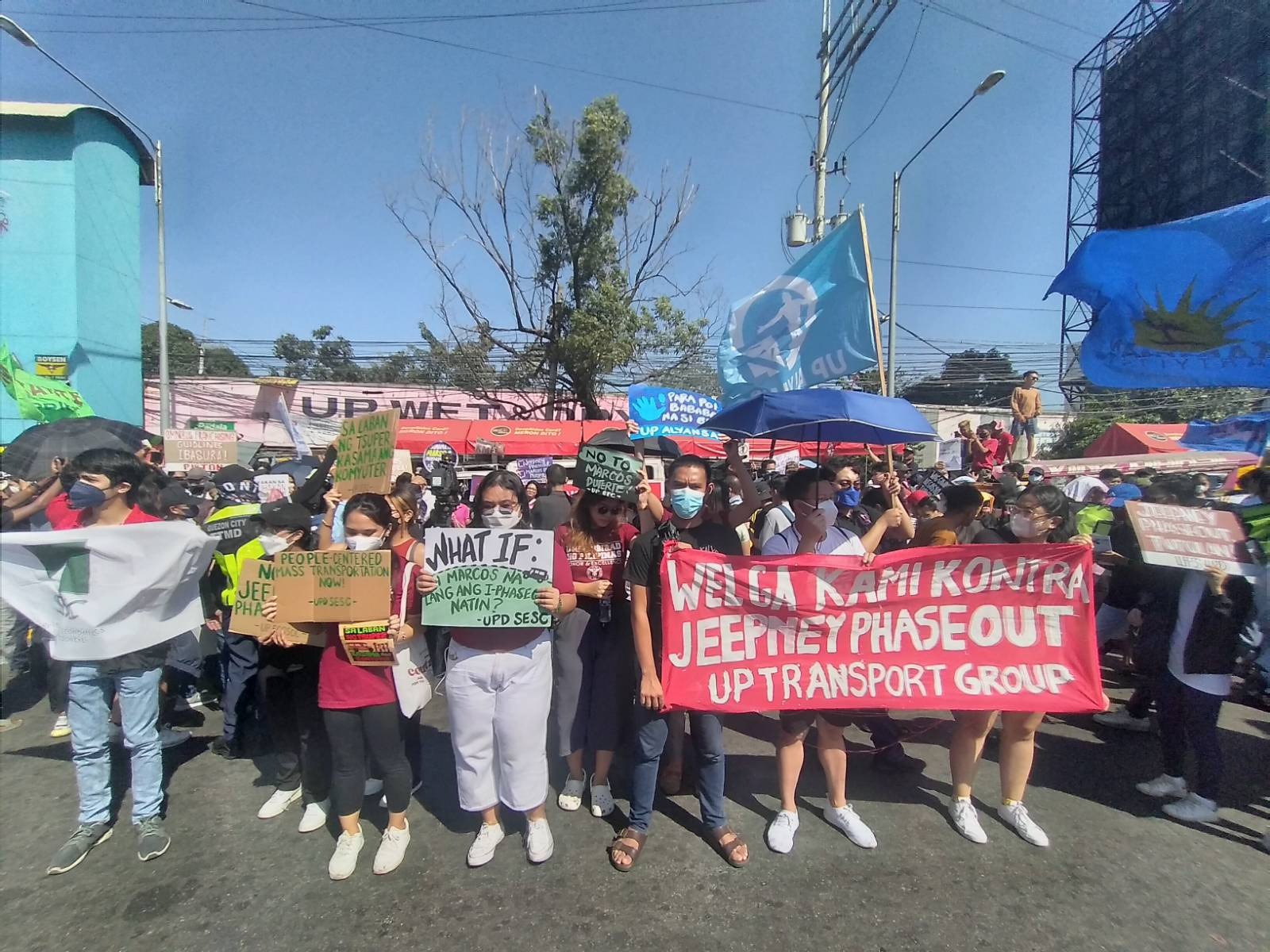Transit Advertising Philippines for Unmatched Brand Visibility
Transit Advertising Philippines for Unmatched Brand Visibility
Blog Article
Recognizing the Role of Transportation Marketing in Enhancing Brand Presence and Consumer Engagement
Transit marketing has become a crucial component in the advertising landscape, using distinct opportunities for brand names to raise their presence and engage consumers efficiently. With the ability to reach a diverse and restricted audience throughout their daily commutes, these advertising approaches are not just concerning presence; they are regarding creating meaningful connections with potential customers. As we discover the diverse advantages and cutting-edge approaches within transportation advertising and marketing, it ends up being vital to consider just how these aspects jointly affect customer understanding and behavior, increasing concerns about their long-term influence on brand commitment.
Interpretation of Transit Advertising And Marketing
Transit advertising refers to the practice of promoting items, solutions, or brand names via ads put around mass transit systems. This type of advertising and marketing includes a selection of positionings, consisting of posters on trains and buses, digital displays at transportation stations, and covers on the exterior of vehicles. It intends to get to a diverse audience, taking advantage of the high foot web traffic related to public transportation.
Transportation advertising is tactically positioned to capture the attention of commuters, that frequently spend substantial time traveling or waiting. By incorporating advertisements right into the daily routines of individuals, brands can create a lasting impact and foster brand name acknowledgment. The tool is specifically efficient in city atmospheres, where mass transit is a key mode of travel.
Additionally, transit advertising and marketing can promote local targeting, permitting services to reach certain demographics based on transit paths and terminal places. As metropolitan populations grow and making use of public transportation rises, this advertising and marketing method has actually gained prominence as a crucial element of incorporated advertising and marketing methods. The dynamic nature of transit marketing, integrated with its capability to engage customers in a captive atmosphere, highlights its value in modern advertising and marketing techniques.
Advantages of Transit Advertising
The effectiveness of transportation advertising hinges on its capacity to supply a multitude of advantages to brands looking for to enhance exposure and interaction. Among the key benefits is the extensive reach it provides; transit ads can properly target varied demographics throughout city locations, getting to both travelers and pedestrians alike. This broad exposure substantially improves brand name recognition.
An additional benefit is the high frequency of impressions. As transit cars travel along well established paths and quit at numerous locations, they create repetitive exposure that strengthens brand name messages. This frequency promotes experience, which is important in consumer decision-making.
Transit marketing is also affordable compared to various other media systems. Provided its expansive reach and potential for high impacts, brand names typically experience a lower cost per thousand impressions (CPM), optimizing their advertising and marketing budget plan.
Furthermore, transit advertisements can develop a feeling of neighborhood connection. By straightening with regional transit systems, brand names can resonate with regional target markets and promote a sense of neighborhood pride. This localized approach boosts brand name commitment and interaction, making transportation marketing a compelling option for organizations intending to strengthen their existence out there.

Effective Approaches for Transit Projects
To make best use of the effect of transit projects, brand names must leverage critical planning and implementation tailored to their target market. First, determining the group features of the audience making use of public transit is vital. This allows brand names to create individualized messaging that resonates with possible clients.
Next, picking the best transportation mediums is crucial. Whether making use of bus wraps, metro posters, or digital screens, each tool has distinct advantages that can enhance exposure. For example, lively visuals on bus wraps can stand out, while electronic ads can be upgraded regularly to reflect prompt promotions.
In addition, integrating a natural branding approach across transit platforms ensures uniformity and strengthens the brand's identification. Utilizing unforgettable taglines and distinctive designs will strengthen brand name recall amongst travelers.
Last but not least, timing is an essential consider performing effective transportation projects. Releasing projects throughout optimal travel hours or local events can substantially boost presence and involvement. By using these approaches, brands can effectively harness the potential of transit marketing, fostering like this greater understanding and connection with their target market. Inevitably, a well-executed transit campaign can drive substantial growth in brand name presence and customer interaction.

Gauging Influence and Involvement
In reviewing the effectiveness of transportation marketing projects, precise dimension of effect and interaction is vital for brand names seeking to maximize their marketing methods. Metrics such as reach, regularity, and impressions offer fundamental data to evaluate visibility. Examining these aspects helps establish the amount of potential consumers are exposed to the advertisements throughout their daily commutes.
Interaction can be further evaluated through consumer interactions, such as web site web traffic, social media sites discusses, and straight actions to calls-to-action included in the ads. Using devices like QR codes or distinct Links can facilitate tracking of consumer habits straight connected to transportation projects. Surveys and feedback mechanisms also act as important techniques to collect qualitative information on consumer perceptions and recall of the advertisement.
Furthermore, progressed analytics and attribution designs can associate transit direct exposure with subsequent getting actions, offering insights into the roi. By using a thorough strategy that integrates qualitative and measurable procedures, brands can develop a nuanced understanding of their transportation marketing effect. Ultimately, this data-driven method allows brands to fine-tune their projects, guaranteeing they resonate properly with target audiences and boost total brand exposure.
Case Research Studies of Effective Campaigns
Successful transportation marketing campaigns offer as engaging examples of just how reliable strategies can elevate brand exposure and engagement. Transit Advertising Philippines. One noteworthy instance is the "I Love New york city" campaign, which changed the city's image and brought in countless tourists. By utilizing i loved this train ads, billboards, and bus covers, the campaign produced a solid, cohesive brand identity, resulting in a substantial uptick in tourism and neighborhood service patronage
An additional exemplary project is Coca-Cola's "Share a Coke" initiative, which leveraged transportation advertising to customize the brand experience. By featuring preferred names on marketing materials across different transportation platforms, Coca-Cola promoted a much deeper emotional connection with customers, motivating them to share their experiences on social media.
In addition, the "Got Milk?" campaign properly made use of public transport ads to get to a wide audience, enhancing the message of the relevance of milk in a official site well balanced diet plan. The project saw a quantifiable boost in milk usage in target demographics.
These study highlight that when performed thoughtfully, transportation advertising can dramatically enhance brand visibility, foster customer interaction, and drive quantifiable outcomes, demonstrating its vital role in contemporary advertising and marketing approaches. - Transit Advertising Philippines
Conclusion
To conclude, transit marketing offers as a crucial device for enhancing brand name presence and fostering customer engagement. By using strategically put promotions within public transport systems, brand names can effectively reach varied audiences and strengthen acknowledgment via regular direct exposure. The execution of targeted messaging and innovative methods better amplifies the impact of transit campaigns. Eventually, the capability to gauge involvement and evaluate effective study underscores the efficiency of transit advertising and marketing in driving brand name loyalty and consumer interactions.
Transportation advertising has arised as a pivotal component in the advertising and marketing landscape, supplying special chances for brands to elevate their visibility and involve consumers efficiently.Additionally, transit advertising and marketing can promote local targeting, enabling companies to reach specific demographics based on transportation courses and terminal places.In assessing the effectiveness of transit advertising campaigns, accurate dimension of influence and interaction is necessary for brand names looking for to maximize their advertising and marketing approaches.Effective transit advertising campaigns serve as compelling instances of just how efficient methods can raise brand name presence and involvement.In verdict, transportation advertising and marketing serves as an essential device for enhancing brand presence and promoting consumer engagement.
Report this page